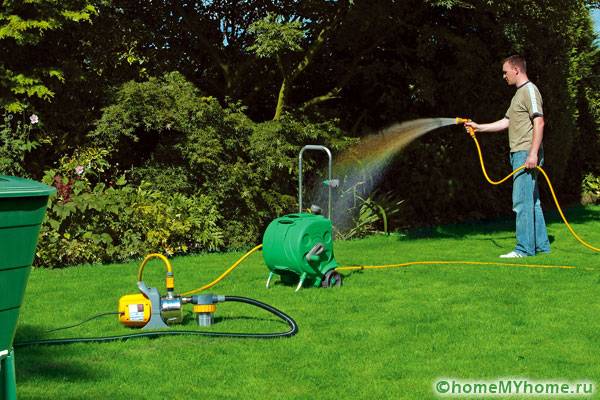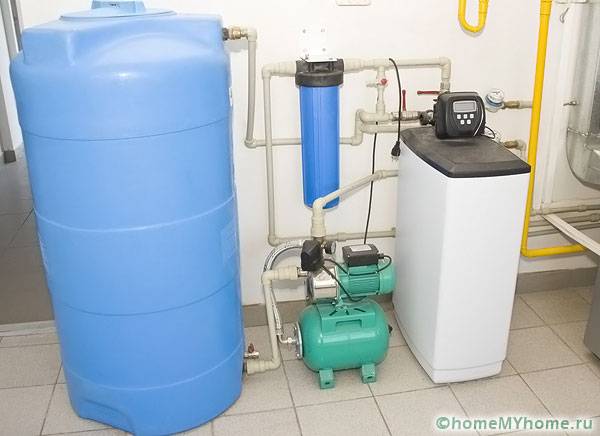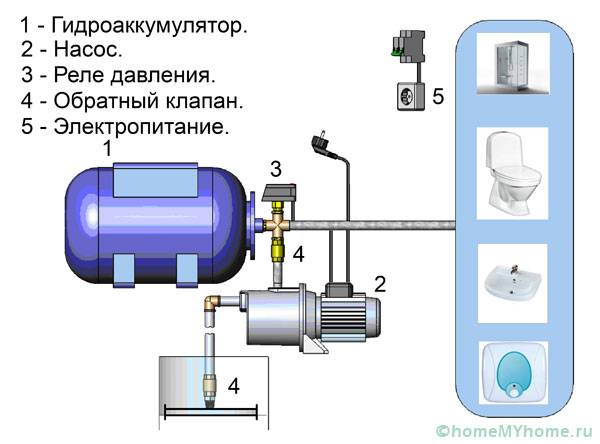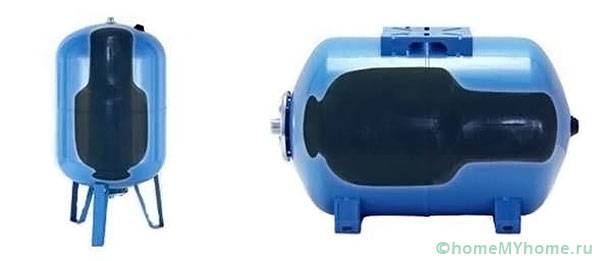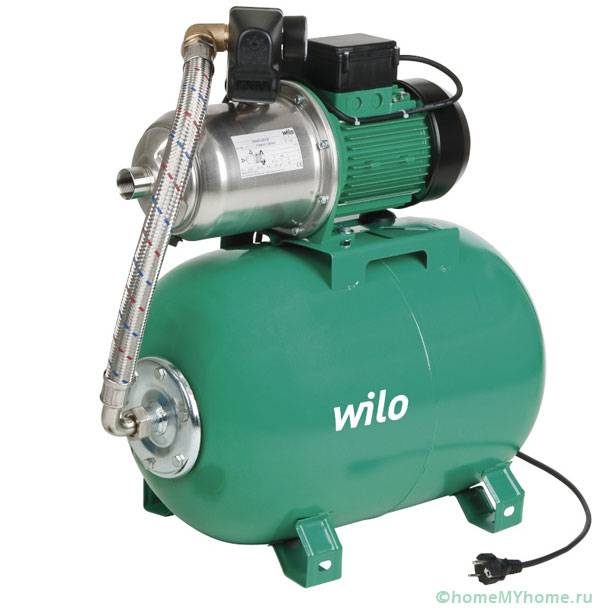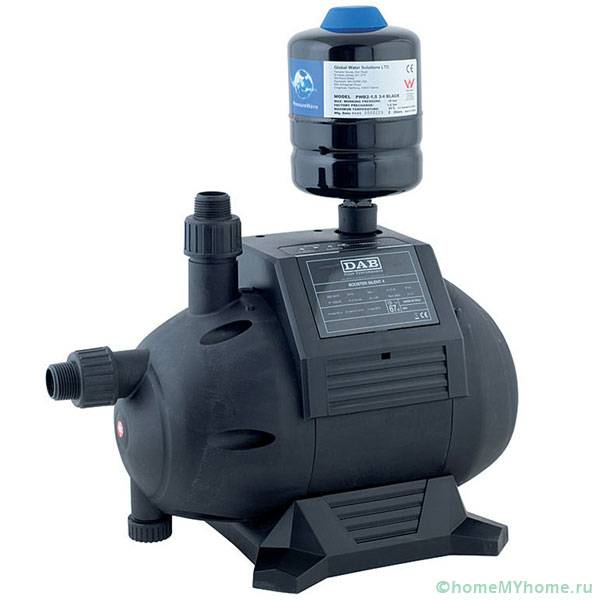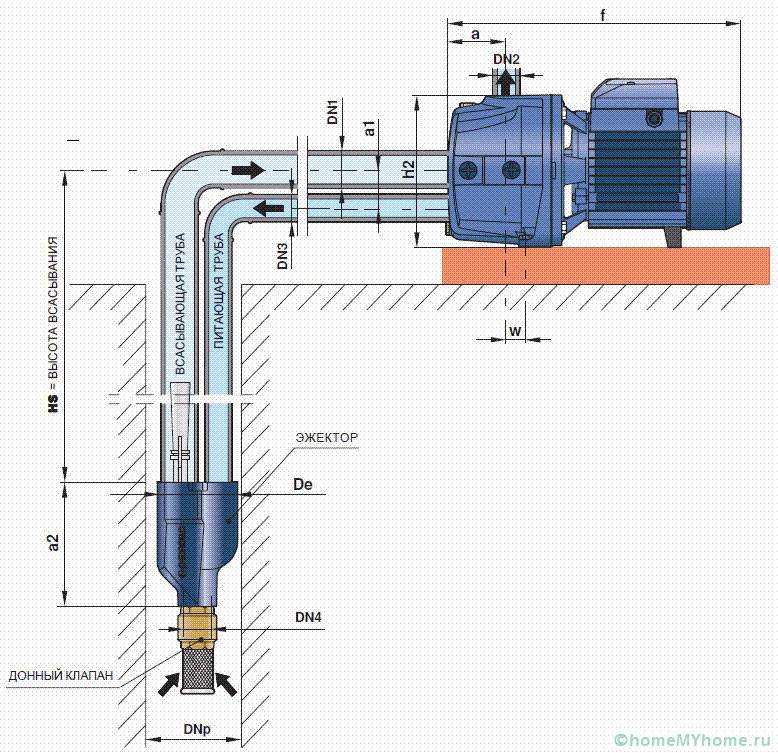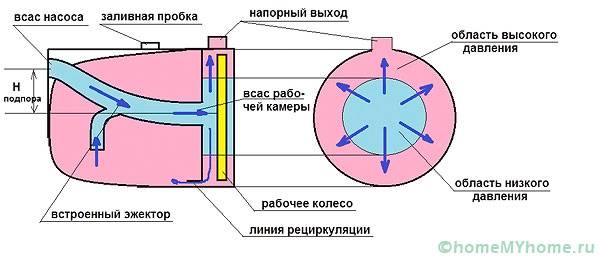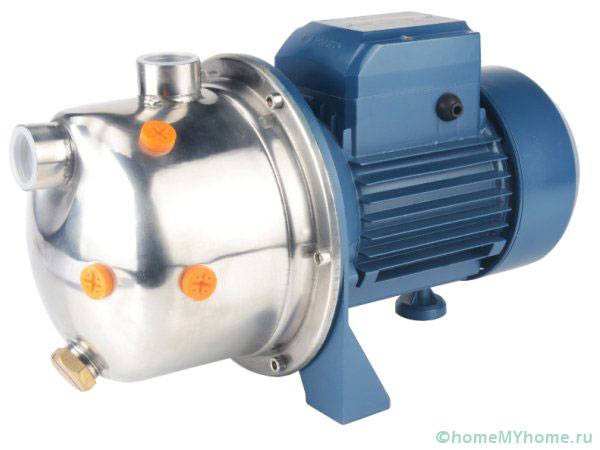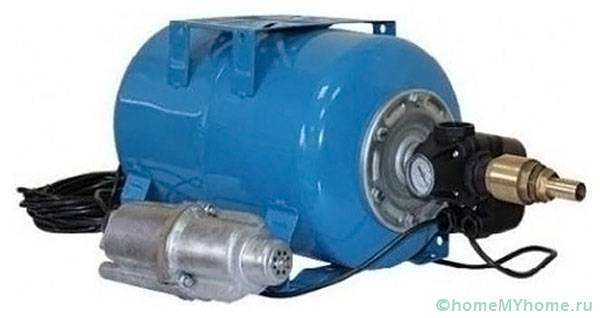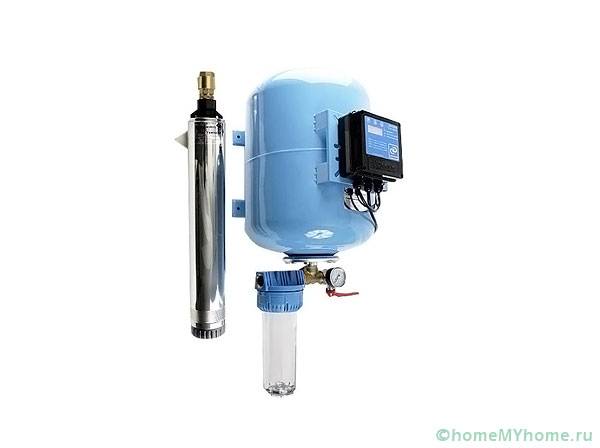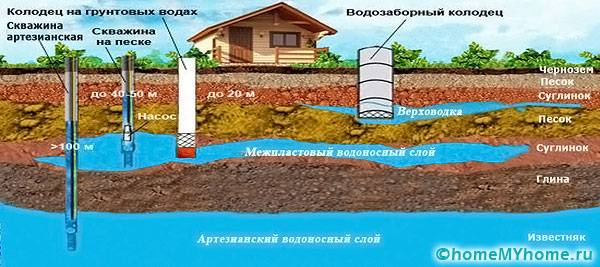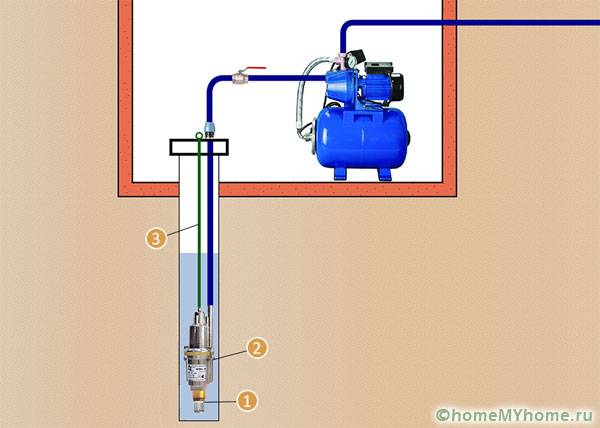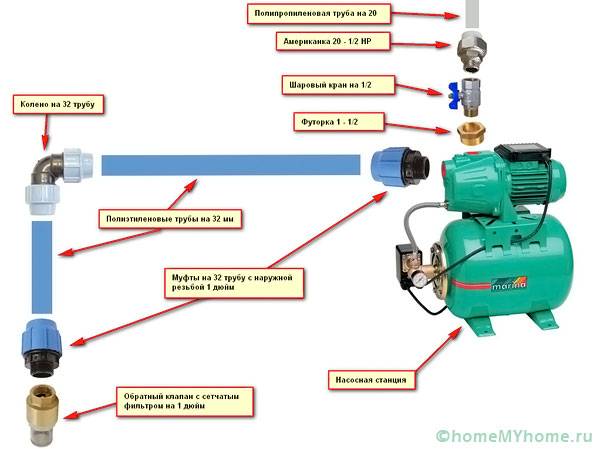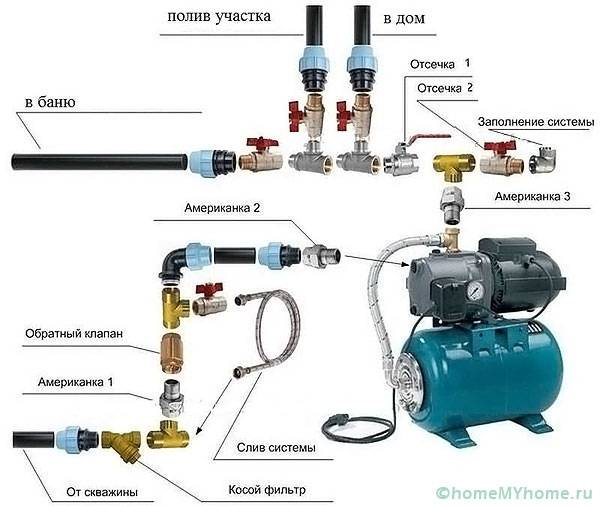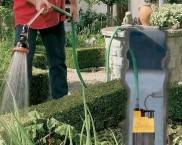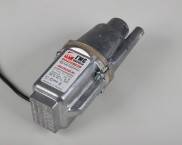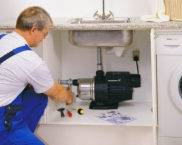Pumping station for a private house: water supply without hassle
ABOUTThe remoteness of their own house within the city or a country cottage from the centralized water supply system creates a problem for their owners with water supply. Pumping station for a private house: water supply, independent of centralized communications, it is able to supply housing with water from a well or well. The article will acquaint you with the types of installations, the principles of their operation, advantages and tell you which equipment to give preference to when choosing.
The content of the article
- 1 Pumping station for a private house: water supply with advantages
- 2 Varieties of installations
- 3 How to choose a water station
- 4 Calculator for calculating the required performance of a pumping station
- 5 Calculator for calculating the required head for a pumping station
- 6 Calculator for calculating the required pressure for a pumping station
- 7 Video: how to choose a pumping station
- 8 Connection diagrams
- 9 Tips & Tricks
- 10 Conclusion
- 11 Video: autonomous water supply of a private house
Pumping station for a private house: water supply with advantages
The easiest way to supply water from a well to a house or garden is using a submersible pump. But the operation of the pump must be monitored - monitor the filling level of the container, turn it on and off if necessary.
A pumping station is a set of equipment that provides an automatic water supply mode while maintaining the required pressure in the water supply system.
Complex advantages
Water supply pumping stations for a private house create advantages when using:
- autonomy;
- pressure stability in the water supply system;
- the possibility of water supply for some time even with a temporary power outage (the duration of the water supply depends on the volume of the accumulator);
- compactness of complex equipment;
- efficiency, which is ensured by timely switching on and off of the pump;
- minimal harm from possible water hammer;
- durability.
The main elements of the system
As part of a classic pumping station for private house water supply includes:
- a pumping device that lifts water from a well;
- a pressure accumulator (hydraulic accumulator or membrane tank), which maintains the pressure in the water supply system at the required level;
- relayresponsive to changes in pressure in the system, making it possible to turn on and off the pump;
- check valve, protecting against "dry running";
- a pressure gauge that allows visual control of the pressure in the system;
- a filter that protects the check valve and pump from contamination.
Operating principle
After starting the installation, the pump lifts water from the well, then directs it to the accumulator. The accumulator capacity is divided into two parts. One of them contains air under pressure, and the other is intended for water. When water consumers are turned on, the amount of water in the tank decreases, and the pressure in the system drops.
A relay reacts to a decrease in pressure, starting the pumping device, which pumps water into the accumulator until it is completely filled, until the pressure reaches the required value.
The pump goes into standby mode until the next change in pressure, which follows the opening of the valve. The main conditions for maintaining the system in working order are the availability of electricity, the availability of water in the water intake.
Varieties of installations
Household equipment complexes are subdivided into self-priming and automatic.
In automatic installations there is no need for a membrane tank, since the water pressure is monitored by electronic sensors.
Equipment classification
The installation provides water supply either by means of a surface pump mounted on a pressure accumulator, or by means of a submersible pump, which is placed inside a well or well.
Depending on the surface pump used to complete the installation, they are divided into types:
- Centrifugal (vortex) - they are distinguished by an insignificant suction depth (up to 8m), high head, low productivity. The suction line must be completely filled with water to start such a device. The high noise level makes them unsuitable for residential use.
- Multistage - they have a higher performance, a relatively low noise level, the suction depth is similar to that of centrifugal pumps.
- Self-priming with a remote ejector - they are distinguished by a significant suction depth (more than 40 m). The device is rather difficult to mount. As a rule, they are resorted to if the water level at the water intake point is more than 8-9 m, but there is no possibility to use a submersible pump.
- Self-priming with built-in ejector - they are distinguished by medium pressure and productivity at a suction depth of up to 9 m.The device does not need to completely fill the suction pipe, it is capable of starting, even if there is some air in the pipe.
Depending on the submersible pump that was used to complete the installation, they can be divided into types:
- Vibrating - they are distinguished by ease of installation and subsequent operation, the absence of rotating elements extends their service life.
- Centrifugal - they are distinguished by high efficiency, reliability, simplicity. They make it possible to regulate the water pressure.
Helpful information! Some manufacturers offer silent water pumping stations for a private house. The possibility of silent operation should be clarified when purchasing the unit.
Well-known brands of pumping complexes and prices
In the market of pumping complexes, the following brands have proven themselves well:
- Marina and Pedrollo - from Italian manufacturers and developers;
- Gardena and Metabo are German companies;
- Dzhileks, Whirlwind - from a domestic manufacturer;
- Belamos - from Belarusian developers.
The modern market offers a wide range of water supply pumping stations for a private house, the price of equipment depends on its type and manufacturer.
The minimum price for a low-power surface self-priming installation is about 3 thousand rubles. A similar model from a well-known manufacturer will cost one and a half to two times more. The minimum price for a surface self-priming complex of medium power is about 6 thousand rubles. Decent quality, affordable price are combined with the Jumbo (Dzhileks) series installations, the station, depending on the characteristics, will cost from 8 to 20 thousand rubles. The price for German equipment of TM Metabo is from 7 to 30 thousand rubles, the average cost is 12 thousand rubles.
How to choose a water station
The most important technical characteristics when choosing a complex are:
- Well depth (suction depth). At a depth not exceeding 9 m, installation of any device is permissible. Deeper depths require a submersible pump.
- Aggression. It is calculated taking into account the length of the pipeline and hydraulic losses.
- Performance. It should correspond to the volume of water consumption per hour by all consumers.
- Power. It is directly related to the depth of the well and the distance to the station. The greater the distance, the more pump power will be needed.
- Accumulator volume. It must match the level of consumption.
- Well flow rate. An indicator of the amount of water in the source from which it will be taken. The pump capacity should not exceed the well flow rate.
Calculator for calculating the required performance of a pumping station
Calculator for calculating the required head for a pumping station
Useful advice! When choosing a device, you should take into account the volume of the accumulator, which depends on the number of residents. For 3-4 people, the volume of the tank must be at least 50 liters, for 6 residents - 100 liters. It is important to take into account that a larger tank volume extends the pump's life, since it goes into operation less often.
Video: how to choose a pumping station
Connection diagrams
Depending on the design of the water supply system, two connection schemes are possible: two-pipe and one-pipe.
One-pipe system is used for surface installations supplying water from a depth of less than 10 m. To supply water from a depth of more than 20 m, a two-pipe scheme is used.
Two-pipe connection diagram
The sequence of work is as follows:
- install a grid on the pumpfilter to protect against fine debris and sand;
- install a bell at the top of the pump, then squeeze. To achieve the desired section, install several squeegees.
- at the end of the squeegee, install a coupling that will dock the device with the water supply.
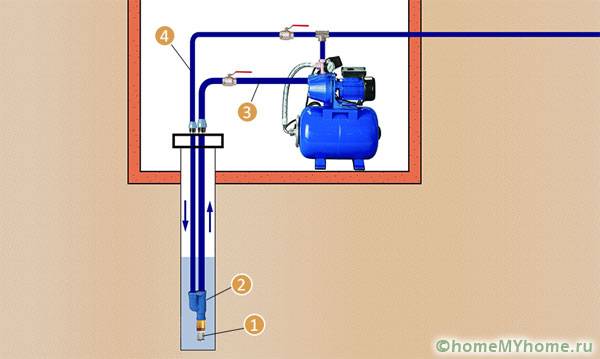
Two-pipe water supply scheme of a private house with a pumping station (1 - a check valve with a filter, 2 - an ejector, 3 - a suction line, 4 - a recirculation pipe)
It is important to check the tightness of all joints of the structure, since air intake will lead to unstable operation of the installation, loss of its power. Threaded connections must be securely fixed, to achieve tightness using gaskets and special means.
Pipes should be laid with a certain margin. After laying the pipes, the connection is carried out in the following sequence:
- install the head on the casing;
- calculate the immersion depth of the pipes, taking into account that the inlet pipe should be located approximately 1 m from the bottom of the well;
- install pipes to the pump structure;
- install a knee on the head of the well;
- pass pipes through the elbow (it is possible to connect pipes with adapters);
- lower the pump to the required depth;
- fix the head on the casing with reinforced tape.
Below the freezing point from the point of water intake, pipes are laid to the house, where they are connected to the installation. Its launch is possible after pouring water into the opening of the pumping station. After the first start, you need to check the pressure, which should be 1.5 atmospheres on average.
Tips & Tricks
- The main criterion when choosing an installation is the pump power, which for household models ranges from 600 to 1500 W. As a rule, recommendations for equipment are provided by the drilling company that prepared the source for water intake.
- The pump performance for a private house depends on the number of people living in the house, ranging from 3 thousand to 6 thousand l / hour. If a well is equipped in a house with seasonal living, you can limit yourself to a capacity of 500-900 l / h.
- Since the accumulator is able to provide housing with water for some time after a power outage, it is advisable to choose a tank with a volume greater than the nominal one.
Conclusion
The purchase and installation in a country house or at the dacha of a pumping station allows:
- create comfortable living conditions;
- automatically provide housing with clean water suitable for any purpose;
- equip a well even inside the housing.
Video: autonomous water supply of a private house



